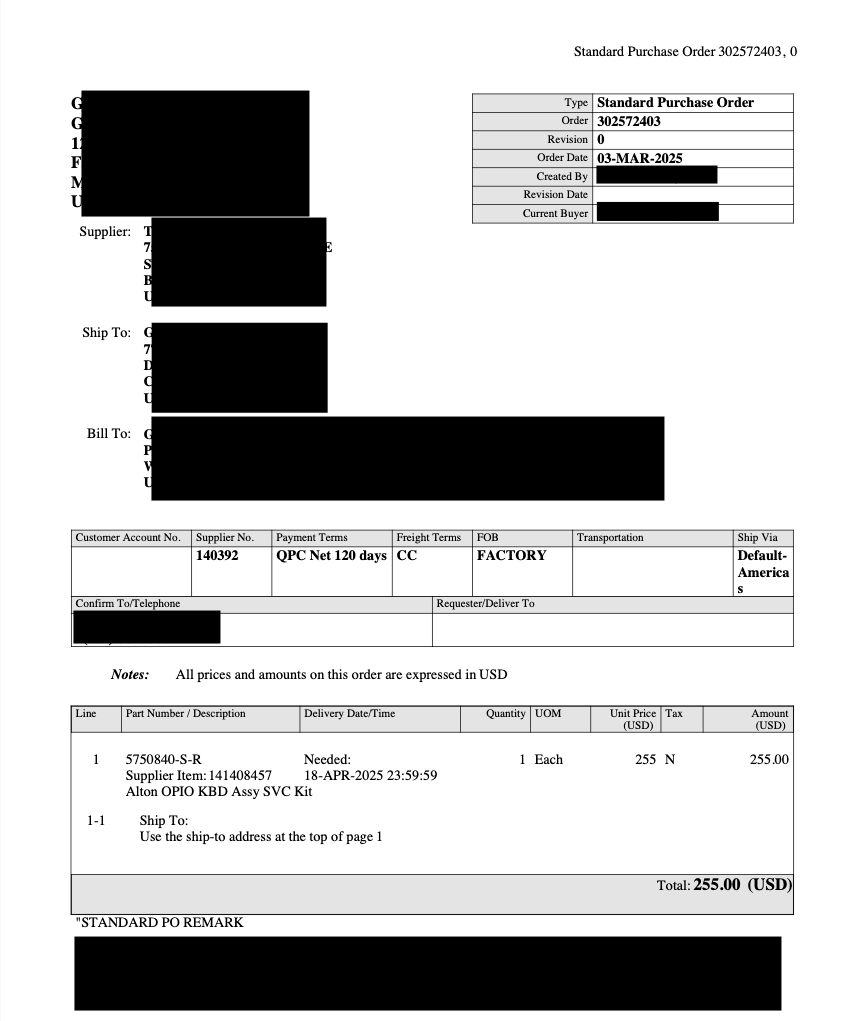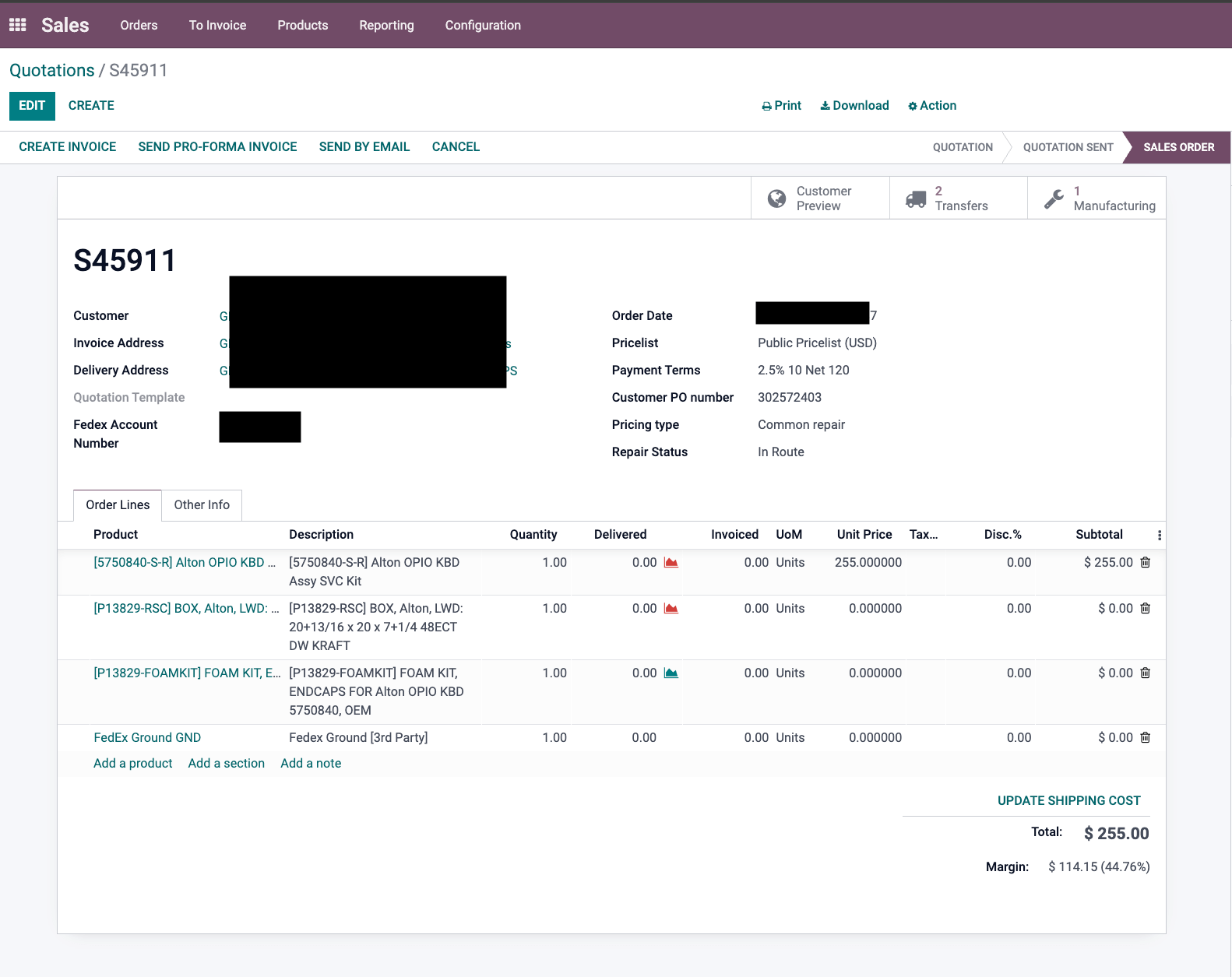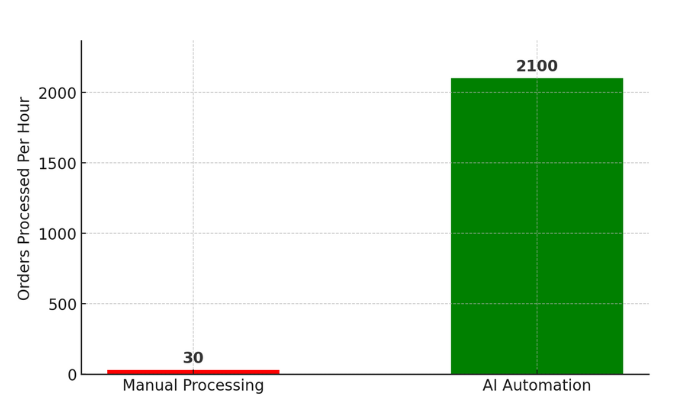Introduction
Manual order processing from PDF files presents a common challenge for many businesses. Time-consuming and prone to human errors, this process can cause delays within a business’s supply chain.
By implementing AI-driven automation, your company can significantly streamline PDF order processing. AI technology, such as Docupanda.io, can analyze documents, extract essential data, and automatically create orders in Odoo, thus eliminating the need for manual entry.
This article explores key challenges of manual order processing and explains how AI-powered parsing improves efficiency, thereby demonstrating the integration of AI parsing with Odoo.
Challenges in Processing PDF Orders Manually
- Diverse document formats: Different suppliers and customers provide orders in various PDF formats, leading to complexities in manual processing.

- Data entry errors: Human errors during manual input can lead to incorrect orders, costly mistakes, and delays.
- Slow processing speed: Manual data entry takes significant time, slowing down sales and fulfillment processes.
- Integration issues with ERP systems: Manual data entry can match ERP structure, but building automated Odoo integrations that reliably process semi-structured or even unstructured documents, such as PDFs from suppliers or clients, is difficult. Content and formatting variations often cause failures in custom-built import tools.
AI Parsing vs. Traditional OCR: Key Differences
OCR (Optical Character Recognition) converts scanned text into editable characters but does not involve data structure or relevant meaning comprehension.
AI-based PDF Parsing (e.g., Docupanda.io) goes beyond simple text recognition:
- Extracts structured data, such as order numbers, prices, dates, suppliers, and product details.
- Adapts to different document formats without requiring predefined templates.
- Automatically classifies and organizes data for seamless integration with business systems.
Advantages of AI Parsing over OCR:
- Works with non-standard tables and various document layouts.
- Recognizes contextual meanings of data fields.
- Requires no manual template configuration.
How AI Enhances PDF Order Processing
Our AI-driven approach involves using Docupanda.io for document parsing, which significantly improves order processing efficiency.
Process Overview:
- Incoming orders are received by email with PDF attachments.
- Attachments are forwarded to Docupanda.io for AI-powered data extraction.
- AI analyzes the document and returns structured data in JSON format.
- The extracted data is used to automatically create Sales Orders (SO) in Odoo.
- The system validates extracted data and integrates it into the ERP workflow.
Such automation reduces manual workload and enhances data accuracy.
Integrating AI Document Parsing with Odoo
The integration between Docupanda.io and Odoo is achieved through API-based automation. The process works as follows:
- The system monitors an email inbox for new order emails with attached PDFs.
- Attachments are automatically sent to Docupanda.io for processing.
- The AI parser extracts key details, such as customer info, product SKUs, order quantities, delivery dates, etc.
- The extracted data is then structured into JSON format and sent back.
- A script processes the JSON response and creates a Sales Order (SO) in Odoo.
- When necessary, the system flags discrepancies for human review.



This seamless integration ensures that orders are processed rapidly and with high accuracy, thereby minimizing the need for human intervention.
Business Benefits of AI-Powered Order Processing
- Cost savings
- Reduced labor costs associated with manual data entry.
- Error reduction
- AI ensures accurate data extraction, minimizing costly errors and returns.
- Faster order processing
- AI automation enables near-instant order entry into Odoo.
- Faster processing speeds up sales availability timing and thus delivery, giving the company a competitive advantage.
- Increased scalability
- AI-driven automation can handle order volume growth without hiring additional staff.
- Less bottlenecks means that businesses can scale operations efficiently.

Real Use Case
One of our clients, TH Electronics, used OCR technology to process orders into Odoo. While it generally worked well, issues arose whenever suppliers changed their order template or when new suppliers were onboarded. In such cases, adjusting the OCR integration took several days, during which time the client had to process orders manually.
After implementing AI-based order processing, the adaptation time for new formats was reduced to just one hour.
What Else in Odoo Can Be AI Integrated?
Nearly all AI applications have already been integrated by Odoo 18 (such as email and article writing, etc.). The idea of leveraging AI for Predictive Analytics & Forecasting is valuable, although something similar already exists in Odoo itself.
Related service: Contact us if you want to integrate AI predictive analytics into Odoo.
Conclusion
Automating order processing using AI-powered document parsing with Docupanda.io and then integrating it with Odoo revolutionizes how businesses handle documents. By eliminating manual processing, businesses gain significant time savings, improve accuracy, and enhance overall efficiency. If your company still manually processes PDF orders, now is the time to explore AI-driven automation.
Discover How Integrating AI with Odoo Can Deliver Real Business Benefits
Recommended articles:






2 Comments
Jane
Is it possible not to forward orders to a third-party service? I am interested from a security perspective, so that all the data is stored only within the company. Can it be deployed locally, or is there another tool?
Ilya Rudy
It’s a valid concern, and yes, local AI parsing is technically possible, but it requires serious infrastructure — typically a dedicated server with GPU, or a resource-heavy setup. Open-source models like LayoutLMv3 or Donut can extract structured data, but they are not lightweight and need engineering effort to deploy and maintain.
There are no plug-and-play local AI parsers that run well on a modest office machine. If strict data privacy is essential, the most practical local options are traditional tools like:
- Camelot – for extracting tables from PDFs
- pdfplumber – for working with raw text and layout
- Tesseract OCR – for image-based text extraction
Keep in mind: these tools don’t “understand” documents. They just extract text or tables — you'll still need to implement logic to structure and validate the data.